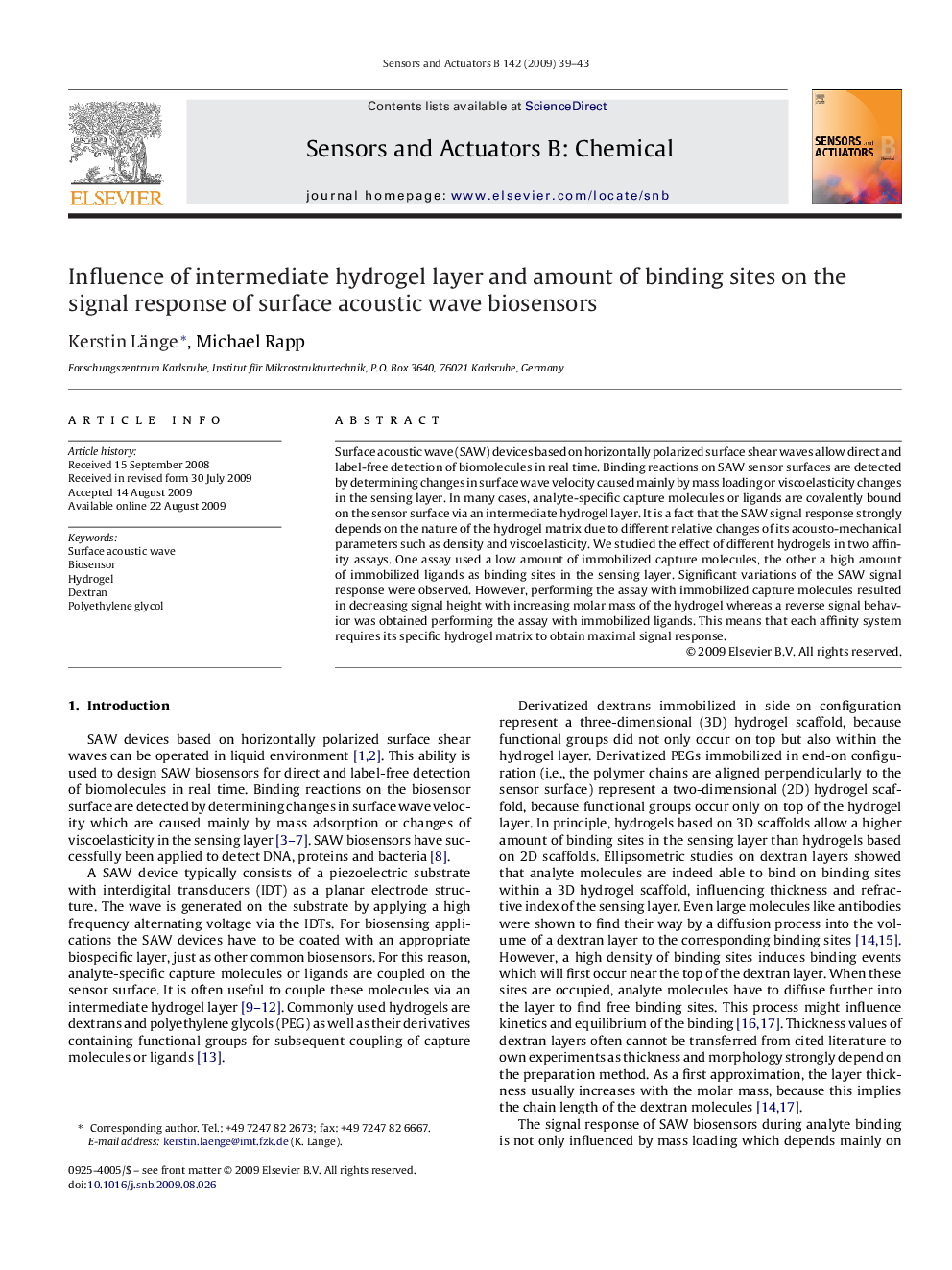| کد مقاله | کد نشریه | سال انتشار | مقاله انگلیسی | نسخه تمام متن |
|---|---|---|---|---|
| 743114 | 894343 | 2009 | 5 صفحه PDF | دانلود رایگان |

Surface acoustic wave (SAW) devices based on horizontally polarized surface shear waves allow direct and label-free detection of biomolecules in real time. Binding reactions on SAW sensor surfaces are detected by determining changes in surface wave velocity caused mainly by mass loading or viscoelasticity changes in the sensing layer. In many cases, analyte-specific capture molecules or ligands are covalently bound on the sensor surface via an intermediate hydrogel layer. It is a fact that the SAW signal response strongly depends on the nature of the hydrogel matrix due to different relative changes of its acousto-mechanical parameters such as density and viscoelasticity. We studied the effect of different hydrogels in two affinity assays. One assay used a low amount of immobilized capture molecules, the other a high amount of immobilized ligands as binding sites in the sensing layer. Significant variations of the SAW signal response were observed. However, performing the assay with immobilized capture molecules resulted in decreasing signal height with increasing molar mass of the hydrogel whereas a reverse signal behavior was obtained performing the assay with immobilized ligands. This means that each affinity system requires its specific hydrogel matrix to obtain maximal signal response.
Journal: Sensors and Actuators B: Chemical - Volume 142, Issue 1, 12 October 2009, Pages 39–43